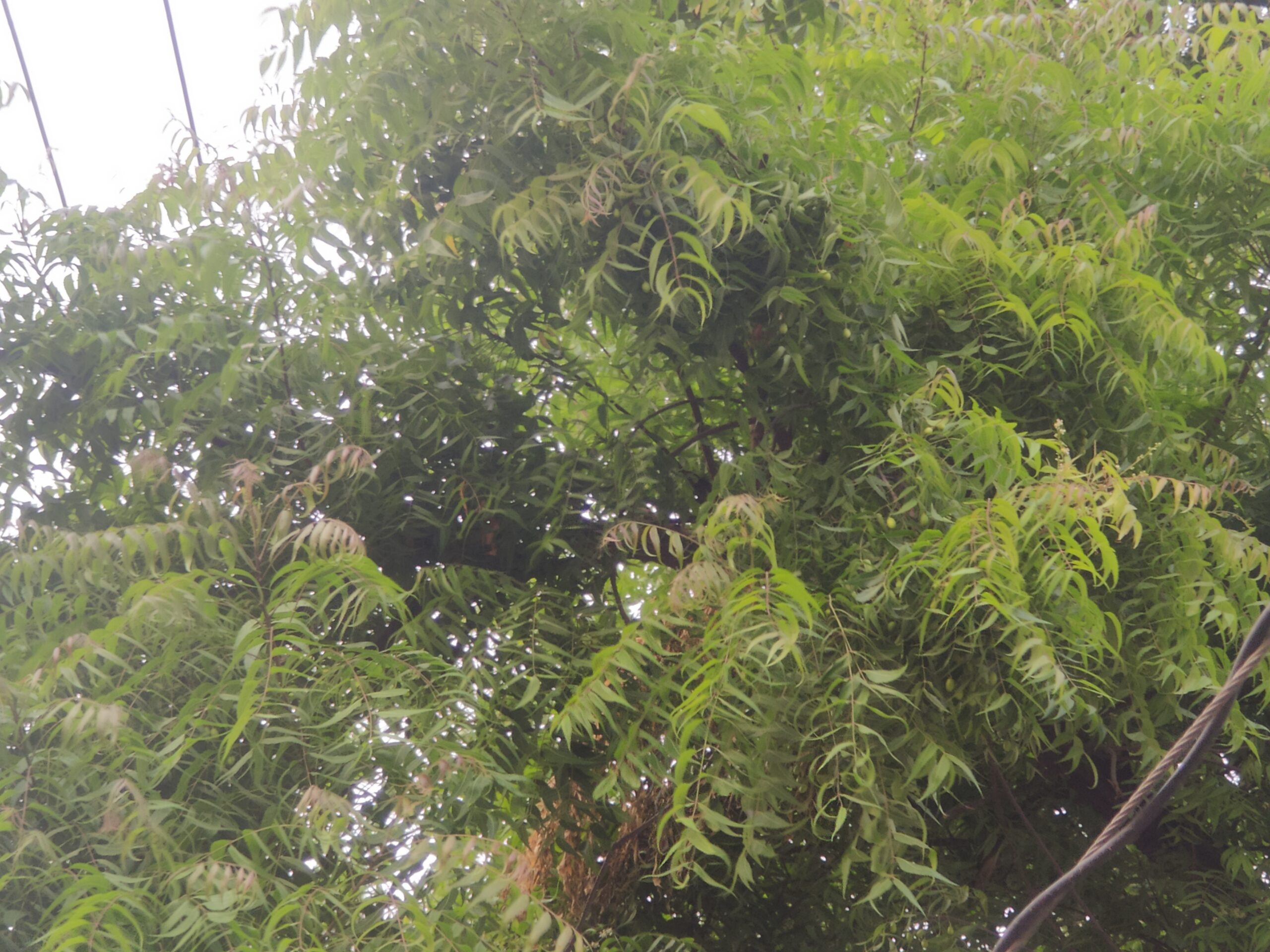
The neem tree is very beneficial for the environment. It can tolerate high levels of pollution, and even if the leaves fall during the dry season, they will quickly sprout new ones. Neem leaves absorb relatively high amounts of lead. Neem plants can absorb pollutants like dust, carbon dioxide, sulfur oxides, and nitrogen. An international study in 1996 indicated that the neem tree is one of the most suitable species for removing pollution in industrial and urban areas and acts as a green belt in known hot spots.
The carbon dioxide fixation capacity of neem is relatively high compared to other plants. It can fix 14 micromoles (per square meter) of carbon dioxide per second. Neem leaves act as a good option to fix most of the carbon dioxide and provide a shield against other pollutants, especially sulfur dioxide. A full neem tree cools the air around it with the equivalent of about 10 tons of AC.
Neem is our indigenous tree, suitable for the climate, and grows in any type of soil. The neem tree is fast-growing, retains the water table, and prevents soil erosion and desertification. Neem oil is an anti-lice and anti-dermatological agent for humans, cattle, and animals. Neem oil, bark, and leaves are used as natural insect repellents and fertilizers. Neem wood is valuable, high quality, healthy, and eco-friendly, and can be used to make houses and furniture that are not damaged by termites, gnats, and other insects.
The neem tree is more economical than other plants and does not cost much in maintenance. Neem can be planted everywhere, including house yards, roads, bazaars, educational institutions, offices, and courts. The smell of a neem tree does not attract insects to the crops around it! So it is beneficial to plant neem trees in crop fields as well. Comparatively, the economic importance of neem is much higher than other timber, fruit, and medicinal plants. Neem leaves are used for treating measles, sores, itching, scabies, and other skin conditions. The neem tree is disease-free and is not eaten by cattle and goats. This tree preserves biodiversity, and birds eat the fruit of this tree. Neem is used for birth control, mosquito repellent, deworming, indigestion, and diabetes. Dried neem leaves are used for preserving valuable textiles, seeds, and crops, and as an insect repellent. Neem cosmetics are healthy and free of side effects. Neem roots, bark, leaves, flowers, fruits, and seeds are all useful, even neem ash.

To keep teeth and gums healthy, neem is used to make toothpaste and pastes. Neem oil keeps the scalp cool, promotes hair growth, and stops hair fall. Neem fertilizers and pesticides are harmless to humans, other mammals, and beneficial insects. Neem is useful in treating leprosy and indigestion, and it is antiseptic and curative for sexually transmitted diseases. Neem is a rich medicine, and above all, the house where a neem tree is kept is free from all kinds of diseases. Scientists have identified the neem tree as the most valuable tree of the next century and mentioned that medicine made from the neem tree will be more beneficial than chemical drugs. Neem can play an important role in economic development, job creation, and environmental protection in poor countries like Bangladesh.
Research has shown that by selling the leaves, fruits, oil, and stems of two 10-year-old neem trees, it is possible to meet the basic needs of a family of five throughout the year. We can plant trees according to our choice in the space of everyone’s house. Let’s plant trees and build an oxygen factory.






Leave a Reply